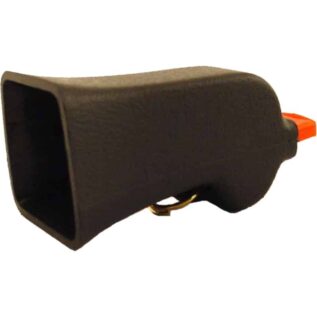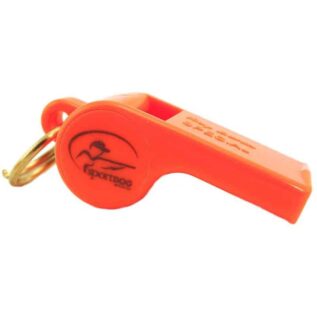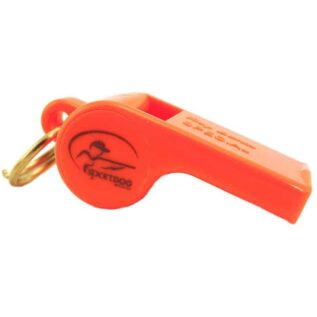Dog Whistles
//Bottom of page content
Comprehensive Guide for Choosing the Ideal Dog Whistles for Your Furry Friend
Introduction
Bringing a dog into your life means taking on the responsibility of their well-being, including their training. One tool that can significantly assist in dog training is a dog whistle. Dog whistles emit sounds at frequencies that are above the range of human hearing, making them effective tools for training and communication. In this comprehensive guide, we will explore the world of dog whistles, their benefits, and how to choose the ideal one for your furry friend.
Understanding Dog Whistles
Dog whistles work by producing high-pitched sounds that are inaudible to humans but can be heard by dogs. They are designed to capture a dog's attention and can be used for various training purposes, such as recall, obedience, and behavior correction. The key to successful training with a dog whistle lies in understanding how dogs perceive and respond to different frequencies.
Benefits of Using Dog Whistles
Using a dog whistle as a training tool offers several notable benefits that set it apart from other training methods. Let's delve deeper into the advantages of using dog whistles:
- Clear and Consistent Sound: Dog whistles produce a distinct and consistent sound that is easily distinguishable by dogs. Unlike verbal commands that can be muddled or misunderstood, the sound of a dog whistle cuts through distractions, background noise, and distance. This clarity ensures that your furry friend receives a consistent signal, making it easier for them to understand and respond to your commands.
- Long-Distance Communication: One of the significant advantages of dog whistles is their ability to facilitate long-distance communication. Unlike voice commands that may lose clarity or volume over a distance, a dog whistle's sound remains clear and audible, even at far distances. This makes dog whistles particularly useful in outdoor environments, large spaces, or when training activities require your dog to be at a distance from you.
- Non-Threatening and Humane: Dog whistles provide a humane training method that does not cause harm or discomfort to dogs. The high-pitched sound emitted by the whistle is designed to capture a dog's attention without inflicting any pain. This makes dog whistles an excellent choice for positive reinforcement training techniques, promoting a healthy and cooperative relationship between you and your furry friend.
- Reduced Dependence on Voice Tone: Verbal commands often rely on the tone of voice to convey meaning. However, dogs may have difficulty distinguishing nuances in tone or may be more responsive to specific pitches. With a dog whistle, you can eliminate the variability of voice tone and focus on providing a consistent and easily recognizable sound that your dog can associate with a specific command.
- Minimizes Disruption in Public Spaces: When training your dog in public spaces, using a dog whistle can be advantageous. The sound produced by a whistle is less likely to disturb or inconvenience others compared to using voice commands. This allows you to maintain control and effectively communicate with your dog without causing disturbances or distractions to those around you.
In summary, using a dog whistle as a training tool offers clear and consistent signals, facilitates long-distance communication, promotes humane training practices, reduces reliance on voice tone, and minimizes disruption in public spaces. By harnessing the benefits of dog whistles, you can enhance your training sessions, improve communication with your furry friend, and achieve more reliable and consistent results in your dog's behavior.
Factors to Consider When Choosing a Dog Whistle
Selecting the right dog whistle for your furry friend requires careful consideration. Here are some key factors to keep in mind:
- Frequency: Dog whistles come in different frequencies, and it's essential to choose one that suits your dog's hearing range.
- Material: Dog whistles are typically made from plastic or metal. Consider durability and comfort when selecting the material.
- Sound Adjustability: Some dog whistles allow you to adjust the pitch or tone. This feature can be helpful when tailoring the whistle to your dog's preferences.
- Weather Resistance: If you plan on using the whistle outdoors, opt for a weather-resistant model that can withstand various conditions.
- Training Goals: Identify your specific training goals to determine if you need a single-frequency whistle or one with multiple tones.
Different Types of Dog Whistles
There are various types of dog whistles available on the market. Some of the commonly used ones include:
- Acme Silent Dog Whistle: This whistle produces ultrasonic sounds that are adjustable and can be customized to suit your dog's hearing.
- Whistle Clickers: These combine the benefits of a whistle and a clicker, providing dual functionality for training purposes.
- Whistles with Lanyards: Whistles with lanyards offer convenience, allowing you to keep the whistle easily accessible during training sessions or outdoor activities.
Training Techniques with Dog Whistles
When using a dog whistle as a training tool, employing the proper techniques can maximize its effectiveness. Here are some detailed tips to help you get started:
- Introduce the whistle gradually: Introducing the whistle to your dog should be a gradual process. Begin by associating the sound of the whistle with positive experiences and rewards. For example, whenever you blow the whistle, offer your dog a treat or engage in a favorite play activity. This positive reinforcement helps your dog form a positive association with the sound of the whistle.
- Use consistent commands: Alongside the whistle, use consistent verbal commands to reinforce desired behaviors. For instance, if you're teaching your dog to come when called, blow the whistle and simultaneously give the command "come." Repeat this process consistently, ensuring that your dog understands that the whistle sound is connected to the command.
- Start with short training sessions: Begin your training sessions with the dog whistle by keeping them short and focused. This approach helps prevent your dog from becoming overwhelmed or losing interest. Gradually increase the duration of the training sessions as your dog becomes more accustomed to responding to the whistle. Remember to incorporate regular breaks and rewards to keep the training sessions positive and engaging.
- Be consistent and patient: Consistency and patience are key when using a dog whistle. Stick to the same commands and whistle signals consistently, and avoid confusing your dog by using different variations. Additionally, be patient with your dog's progress. Each dog learns at their own pace, so give them time to understand and respond to the whistle commands.
- Reinforce desired behaviors: When your dog responds correctly to the whistle command, provide immediate reinforcement and rewards. This can be in the form of treats, praise, or playtime. Positive reinforcement helps strengthen the association between the whistle sound and the desired behavior, encouraging your dog to repeat the behavior in the future.
- Progress gradually: As your dog becomes more comfortable with the whistle and responds reliably to basic commands, you can gradually introduce more advanced training techniques. This can include using different whistle sequences or signals for specific behaviors or incorporating whistle commands into more complex training exercises. Progression should always be gradual and tailored to your dog's individual abilities and learning pace.
Remember, training with a dog whistle requires consistency, positive reinforcement, and patience. By following these techniques, you can effectively communicate with your dog using the whistle and develop a strong bond built on trust and understanding.
Conclusion
In conclusion, dog whistles are valuable tools for dog training and communication. They provide a consistent and effective means of conveying commands and expectations to your furry friend. By considering the factors outlined in this guide and selecting the right dog whistle, you can enhance your training sessions and strengthen the bond with your dog.
Frequently Asked Questions
Can any dog hear a dog whistle?
Most dogs can hear the sounds produced by dog whistles, but the hearing range may vary depending on the individual dog.
Are dog whistles harmful to dogs?
No, dog whistles are not harmful to dogs. They produce sounds that are within the safe range for canine hearing.
Can I use a dog whistle for recall training?
Yes, a dog whistle can be an effective tool for recall training, as it provides a clear and attention-grabbing sound.
Can I train my dog with a whistle without professional help?
While professional guidance can be beneficial, it is possible to train your dog with a whistle using proper techniques and resources.
Can I use a dog whistle for any breed of dog?
Yes, dog whistles can be used for training purposes with any breed of dog. However, individual hearing capabilities may vary.





